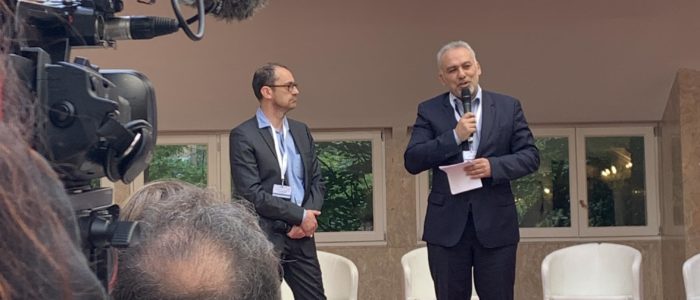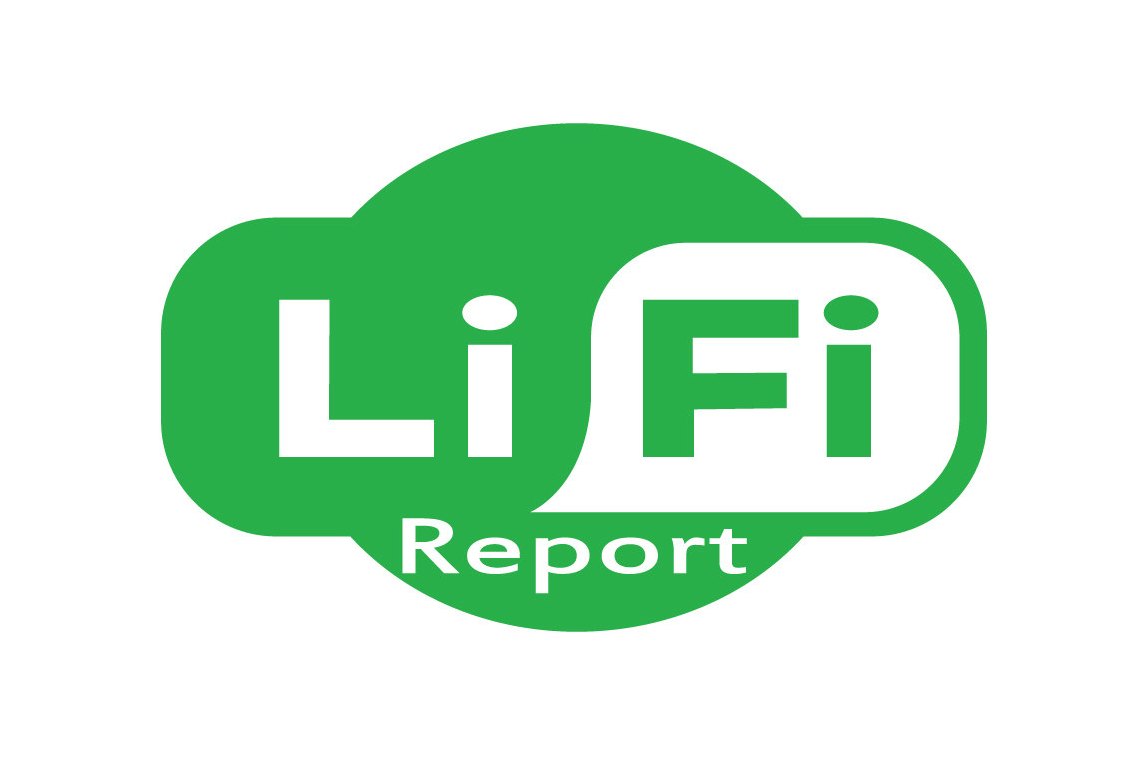
It’s the Chicken or the Egg at the 2nd Annual Global LiFi Congress
Your humble editor attended the 2nd Annual Global LiFi Congress in Paris this week and left with four consensus takeaways:
· Not a question of If LiFi will become mass market, the question is when
· Costs must come down
· The industry must agree on a standard for mass adoption
· The dongle must be eliminated, meaning we need a chipset
The intent of the conference was to merge the business discussion with the scientific discussion and the organizers achieved their goal.
Many speakers talked about the old cliché of the chicken and egg. Device manufacturers want to see LiFi access points before incorporating LiFi into phones, pads and laptops. The lighting manufactures want to see LiFi incorporated into those devices before adding LiFi to new fixtures. It’s a stalemate. All agree that costs must come down dramatically before LiFi will be ready for the mass market. As an industry, LiFi is between the proof of concept and the early adopters stage.
Representatives of several LiFi companies were present: PureLIFi, OledComm, Lucibel, VLNcomm, Signify and Velmenni. Lighting companies Acuity, and Douglas Controls were also in attendance, although neither would speak on the record about their LiFi plans. In addition, we saw many former Philips people.
On the business side of the discussion, OLEDcomm’s Benjamin Azoulay kicked off the conference by stating that the Industry’s ability to reach its inflection point laid in fostering use cases which will provoke mass demand for LiFi, thus convincing industrials to produce components at a low cost, which in turn will accelerate mass deployment of LiFi on a global scale.
We spoke to Guy Beaudry, a member of the Board of GiGaLiFi of Mexico City and he believes the Industry needs to quickly form a roundtable of business leaders focused on creating and promoting the use cases with the most potential to achieve the inflection point soonest. That is food for thought – perhaps a North American Conference held in Silicon Valley, a major venture capital hub. After all, while the scientists continued to make progress at this very well organized Paris conference, the search for capital by all market participants remains a major a challenge.
The good news in the area of compelling use cases is that some very big names were in attendance: Air France, Airbus and Orange, the European wireless leader. Although Orange does not manufacture any devices, they have much influence with device makers. Orange sent their Project Manager for LiFi, Micheline Perrufel. The first bit of good news is that Orange has a project manager for LiFi. She spoke passionately about the need for LiFi-enabled smart phones and explained that there are 10 billion lamps in the world, with 4 billion in public lighting. The average home in France has 25 lamps, so lighting is the next logical source for wireless communication. She spoke of cyber security and each day Orange analyzes 50 billion events and close down about 200 sites. If there is a single company to convince phone makers to add LiFi, it will be Orange.
Eliminating the dongle through miniaturization with silicone (chipset) is the answer to lowering the cost and solving the size issue. One company, Pi Lighting from Switzerland, has a project to integrate LiFi into a silicone device. Once a chipset is derived, the cost and the size will drop exponentially which will bring LiFi to a next step. We spoke to their consultant, Thomas Merelle, who explained the next step is fundraising. They have a proof of concept and are looking at financial partners to fund the development.
Maite Brandt-Pearce, Professor Electrical Engineering, University of Virginia explained a bit about the history of Optical Wireless Communications (OWC) and where LiFi fits. She stressed the dual advantages of LiFi: Illumination and Communications. In addition, she discussed various applications and gave an update on current research development. To my knowledge, Qualcomm, th chipset maker to the smartphone industry, was not in attendance. Their focus on LiFi could move the needle dramatically forward if they were to get in the game before next years’ Global LiFi Congress.
This week at the Paris Air Show, Air France will demonstrate LiFi enabled entertainment throughout the plane. While increased communication speed is important, the main selling feature is weight reduction. Most cables are shielded, bonded, and grounded—meaning they are quite heavy. During the retrofit, Air France removed the entertainment boxes under the seat, which is the equivalent weight of 10 to 20 people by replacing cables and connectors with OLEDcomm’s LiFi System.
Professor Harald Haas, who is regarded as the Father of LiFi, because of a Ted Talk in 2011, spoke eloquently about LiFi possibilities. Professor Haas discussed misperceptions with LiFi, including line-of-sight. He also contrasted the speed of LiFi on a bright sunny day to a dark room: only about a 5% to 10% degradation due to saturation from the sun. He showed an animation of how PureLiFi has overcome shadowing (the phone can’t see the light because the head gets in the way). PureLiFi and their fixture partner, Lucibel, appear to be the leader with the most deployed sites in Europe.
Professor Haas also slammed our industry, saying, “The main driver is the lighting industry, which is changing radically. The Industry needs to do something to survive and needs to diversify.” He is right.
Volker Jungnickel of Fraunhofer HHI gave a LiFi standards update, and the roundtable session that followed was uninspiring. Mr. Jungnickel reminded the audience that standards pave the way to the mass market and markets drive standards, with technology having the second priority. Since the conference pretty much agreed on the importance of adopting one standard, it was
disappointing to hear that there may be three key standards: 2 from IEEE and 1 from the ITU-T. Asia and the US typically prefer IEEE and Europe usually prefers ITU-T. I wanted to see accountability of which companies are promoting which standards, as it is hard to unify a group when you don’t know who stands where.
One speaker reminded the audience that today’s Wi-Fi standard has 6,000 pages. The first Wi-Fi standard was published in 1999 but the first Wi-Fi enabled computer only appeared in 2003 and the first Wi-Fi enabled phone in 2006.
Overall it was a great conference and our friends from Get-a-Grip Podcasts were in attendance doing what they do best. We’ll post links to those interviews once they are available.
LiFi presents disruption opportunities to two industries: Lighting and Telecom. The question is who will dominate and drive it. My bet is, as it looks today, it won’t be us unless the Industry reverses the paradigm by causing the business to drive the science and not the other way around.
